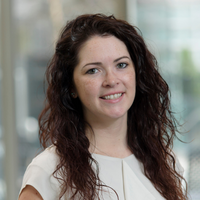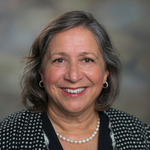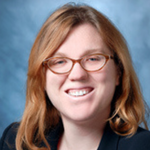In part one of this two-part series, learn about the changes brought on by a new Standards world, and review three case scenarios. Then, look forward to more scenarios in part two.
Introduction
In 2019, we wrote an article called "Perfect Is a Dirty Word: Adventures in Disclosure and Conflict of Interest". This original article included case-based discussions of some sticky disclosure situations we found ourselves in, as well as some strategies to avoid future errors. With the new Standards for Integrity and Independence required to be implemented in 2022, we thought it was time to update you on our “ongoing adventures in a new Standards world.”
The last few years have been a drastic and dramatic time for change everywhere you look. We still contend that humans aren't perfect and mistakes are made, especially while adapting to change in our ever-stressful world.
The new Standards represent change and a step forward, clarifying a few points of previous confusion.
- Standard 3 exceptions specifies situations where disclosure is not required.
- Standard 1 incorporates content validity, while Standard 5 details the separation of ancillary activities.
- Standard 2 gives us more structure for limiting faculty self-promotion and not sharing learner names or contact information.
- The Eligibility Standard gives us more details about what an owner or employee is, and Standard 3.2 provides clarified circumstances for their very limited involvement.
- The definition of an ineligible company changed a bit, as did the specifics around disclosure windows (24 months, no spouse/partner required).
While the Standards do clarify certain points, as we implement these new Standards day to day, we continue to encounter situations that do not clearly fit. Sometimes we are uncertain about how to handle them. Sometimes we make mistakes, but they become lessons learned and improvements in our delivery of accredited education.
This article includes new case scenarios of real-life sticky disclosure situations we found ourselves in, and it provides some strategies to avoid future errors. We will share the stories of Drs. Royalty, Inventor, Board of Directors (BOD), Ownership, Startup, Stock-options, End and Other. We are sure you have encountered some of these scenarios with your own faculty, planners and speakers. We encourage you to reflect on what you might do as you read our experiences.
We encourage all of you to share your experiences. Stop the blame and shame, and focus on the options and opportunities with us. Take the pressure off, learn other possibilities, and set that worry aside.
Case Scenarios
Case 1: Speaker Is an Advisor, Co-inventor and Has Rights to Receive Royalty With Company A
What would you do?
Dr. Royalty will be a speaker in your upcoming live course. They disclose an advisor/advisory committee member relationship with Company A and note, “I am co-inventor of intellectual property licensed by my institution to Company A. I have rights to receive royalty income because of this arrangement.”
What did we do?
First, we needed to understand the nature of the advisor role and royalties. We reached out to Dr. Royalty for additional details.
We asked for confirmation on the therapeutic area to determine relevance and to clarify the advisor/royalty relationship. Dr. Royalty responded that they were on the Scientific Advisory Board (SAB) for Company B. They clarified that Company A was started by Company B, and Company B is the parent company. There was potential to receive royalties from Company A because of an agreement, but nothing has been received yet.
We deemed the relationship as relevant because the business line of both Company A and Company B aligns with the educational content. They are mitigatable relationships and, as a speaker, they will be asked to complete an attestation form and agree that clinical recommendations are evidence-based and free of commercial bias. The conundrum we faced was: How this should be disclosed to learners?
- Leave their disclosure as is — advisor for Company A
- Trust what they wrote
- Update the disclosure to advisory for the parent company, Company B
- Based on new information
- Update the disclosure to advisory for both Companies A and B
- The audience is aware of both company names.
- Update the disclosure to advisory for Company B and royalties for Company A
- Royalties is in an agreement stage, no exchange of money yet (debate if it should be included now or not).
How did we resolve this?
For any of the above options, we could reason what was “the correct way.” We simply could list the company with whom the person has the relationships, not the parent. If they have not received royalties, we assume there was no financial relationships. Ultimately, because there were different perspectives of what would be most appropriate for us, we sought the input of our hospital compliance department familiar with ACCME Standards (Standard 3).
Compliance feedback was to list advisory board with Companies A and B and include Royalties for Company B.
Regarding royalties, although they have not received royalties to date, there is an agreement to receive one, so this is a relevant financial relationship. Like stock options, there is an agreement in place for future potential money, and that incentive might incentivize the speaker to bias their content.
What do accredited providers need to know?
Do your due diligence, and document, document, document! Be certain that the audience is correctly aware of the nature of the relationships and ensure content remains unbiased (Standard 3).
Checking in with the ACCME, they would require the provider to simply list the company with whom the person has the relationship, not the parent. They remind us that, if the individual has not received royalties, there is no financial relationship.
Case 2: Speaker Is a Board of Directors Member
What would you do?
Dr. BOD is an upcoming speaker at your live course. They disclose a board of directors member (BOD) relationship. Dr. BOD has completed a disclosure, so you consult with the hospital compliance department regarding what they have noted for this relationship. You have confirmed with your compliance department that this is a fiduciary relationship¹, so this relationship falls under the Standard that requires you to exclude owners or employees (Standard 3.2). All the information is presented to the designated unbiased content peer reviewer, with no relevant financial relationship, for the course. They are asked if the speaker meets one of the exceptions outlined in Standard 3.2 and their thoughts on the probability of the insertion of commercial bias. The peer reviewer reviews the company information and the lectures assigned to the speaker. They deemed it was exceedingly unlikely that the business line or products of the company were related to the course content and the probability of inserting bias was exceptionally low
What did we do?
We (CME department) felt that we could comfortably proceed with this speaker after we received this perspective from the peer reviewer, had the speaker complete an attestation and had the presentation peer reviewed. Attestation includes that their presentation is fair and balanced in compliance with content validity requirements and that they will follow Standards and other CME requirements that are detailed in the attestation. With this process documented, we believed the integrity of the course was safe (Standard 3).
What do accredited providers need to know?
Ask questions to find out the nature of the relationship. Knowing if the relationship is a fiduciary one or not helps with your next step.
Case 3: Course Director Has Ownership Interest
What would you do?
Dr. Ownership is an upcoming course director for your live course. They disclosed they have ownership interest. We believe the products may to be related to the course content and seek guidance from our hospital compliance department. They respond based on the ACCME definition for an ineligible company that this company was an eligible company because the products were non-medical and not considered a healthcare product. Since the relationship was with an eligible company, we documented our compliance department’s response, and Dr. Ownership continued their role as course director. The disclosure form was updated to no relationships.
What do accredited providers need to know?
Do not automatically assume those who disclose ownership interest have an unresolvable relationship. Ask more questions, and do your due diligence. It is not always cut and dry.
Ready for more case scenarios related to the new Standards? Visit the Almanac next week to read part 2!
¹According to Merriam-Webster, “Legal Definition of fiduciary relationship: a relationship in which one party places special trust, confidence, and reliance in and is influenced by another who has a fiduciary duty to act for the benefit of the party.
Note: A fiduciary relationship may be created by express agreement of the parties, or it may be imposed by law where established by the conduct of the parties. Typical fiduciary relationships exist between agents and principals, attorneys and clients, executors or administrators and legatees or heirs, trustees and beneficiaries, corporate directors or officers and stockholders, receivers or trustees in bankruptcy and creditors, guardians and wards, and confidential advisors and those advised.”
 Katie O’Connell, B.S., is a senior coordinator of continuing medical education at Memorial Sloan Kettering Cancer in New York City. Katie has been in this role since March 2016 when she didn’t even know CME existed to quickly learning all the acronyms! Katie loves to learn and be involved in the amazing CME community and engage with peers. She enjoys planning small and large adventures in her spare time and experiencing them with family and friends.
Katie O’Connell, B.S., is a senior coordinator of continuing medical education at Memorial Sloan Kettering Cancer in New York City. Katie has been in this role since March 2016 when she didn’t even know CME existed to quickly learning all the acronyms! Katie loves to learn and be involved in the amazing CME community and engage with peers. She enjoys planning small and large adventures in her spare time and experiencing them with family and friends.
 Leticia Bresnahan, MBA, CHCP, is the director of continuing medical education for the Joe R. and Teresa Lozano Long School of Medicine at UT Health San Antonio. She has been involved in CME since January 2012 and has survived two accreditation cycles! Her primary passion is public school education, and she is thrilled to join the “grandparent” club.
Leticia Bresnahan, MBA, CHCP, is the director of continuing medical education for the Joe R. and Teresa Lozano Long School of Medicine at UT Health San Antonio. She has been involved in CME since January 2012 and has survived two accreditation cycles! Her primary passion is public school education, and she is thrilled to join the “grandparent” club.
 Marci Fjelstad, MPH, MBA, CHCP, is the associate director of the Continuing Medical Education office at University of Utah Health. Marci has been in this role since January 2016 where she learned quickly guiding the organization through the full array of accreditation cycle experiences and has a background in clinical research management. Marci is mid-life and mid-career, a GenXer who always wanted to change the world. She's a Wild West woman with built-in Midwestern niceness and a Norwegian silent "j" in her last name. Oh, and she loves to hike!
Marci Fjelstad, MPH, MBA, CHCP, is the associate director of the Continuing Medical Education office at University of Utah Health. Marci has been in this role since January 2016 where she learned quickly guiding the organization through the full array of accreditation cycle experiences and has a background in clinical research management. Marci is mid-life and mid-career, a GenXer who always wanted to change the world. She's a Wild West woman with built-in Midwestern niceness and a Norwegian silent "j" in her last name. Oh, and she loves to hike!
 Megan Swartz, CHCP, has spent over 20 years working in healthcare education and medical communications. Megan is currently the associate director of the Office of Continuing Medical Education at Cedars-Sinai. Megan is a past president of the Southern California Medical Education Council (SCMEC) and the recipient of the 2020 Frances M. Maitland Memorial Mentorship Lecture and Award. Megan is an East Coaster living her best West Coast life in Los Angeles with her two children and husband.
Megan Swartz, CHCP, has spent over 20 years working in healthcare education and medical communications. Megan is currently the associate director of the Office of Continuing Medical Education at Cedars-Sinai. Megan is a past president of the Southern California Medical Education Council (SCMEC) and the recipient of the 2020 Frances M. Maitland Memorial Mentorship Lecture and Award. Megan is an East Coaster living her best West Coast life in Los Angeles with her two children and husband.